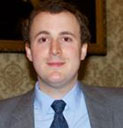An overstretched workforce has repercussions deep into the future, say Michael FitzPatrick and Matthew Roycroft
Across the medical specialties, trainee morale is at an all time low, the inherent support of the firm structure has passed into history, and training time to develop both clinical and non-clinical skills is more limited than ever. While the causes may be many, at the heart of this workforce crisis is a lack of time due to inadequate staffing numbers, and the rota gaps and high workload to which this inevitably leads.
Understaffing has a significant impact upon junior doctors’ working lives: they work beyond rostered hours, often at unsustainable intensities. It changes how they work too, with the remorseless pressure to create “flow” in the hospital forcing doctors to make difficult prioritisation decisions. Do you write the discharge document for a patient to free up a bed for the patient in A&E on a trolley, or do you see the patient the nurses have raised concerns about?
Even moderate understaffing has consequences not just for doctors but for patients: the consultation cut short, the inadequate explanation. These lapses do not get picked up by the radar of “patient safety,” but are massively important for patient satisfaction, our relationships with our patients, and for staff satisfaction. As understaffing worsens, we create an environment where tired, overstretched staff are more likely to make mistakes.
The natural response of trusts in the face of inadequate staffing is, quite reasonably, to staff “the frontline.” However, this short term response has consequences as we lose the opportunity to develop the workforce of the future. The medical students of today will face a very different set of challenges to their colleagues that went before them. Multimorbidity, obesity, and aging are driving remorseless increases in the demands placed on healthcare, while simultaneously, novel diagnostics, the genomic revolution, and the breathtaking pace of pharmaceutical developments mean our options for improving people’s lives are increasing exponentially.
Doctors will need to be more than just great clinicians. They will need to be leaders and managers driving service development and quality improvement. They will need to be reliable appraisers of evidence and well trained researchers. They will need to have the skills and knowledge to embrace new technologies, such as AI, robotics, and digital health platforms. They will need to be able to coordinate and lead teams comprised of not just doctors and nurses, but physician associates, allied health professionals, and advanced nurse practitioners, as well as patients and families, and work with them all in a more collaborative manner.
These skills and behaviours take a great deal of time to develop. If the future health service is to capitalise on these revolutions in healthcare, we need to prioritise the time needed to train our future doctors. To achieve this without compromising the care of today’s patients relies on adequate medical staffing, as well as a perspective that does not let short term pressures compromise these long term goals.
Increasing the physician workforce is, at its simplest, a case of turning on a tap, while ensuring the plug is in. Turning on the tap is simple but politically challenging: we need more places at medical school so that we can train more doctors. The recent announcement of an increase in medical school places is welcome, but these students will not qualify until the mid-2020s, and the increase is not sufficient to match even conservative estimates of workforce requirements. For the short term our options are limited: we need doctors from overseas now, although this raises its own ethical dilemma if it exacerbates workforce problems in other countries.
Ensuring that the plug is in will be more complex. Retention is a problem for doctors at all stages of their careers, with senior doctors retiring early due to pension changes, work intensity, and a lack of flexibility around their working lives, but we will focus on trainees. Sadly, it is not unusual for our newly qualified foundation doctors to rapidly become disillusioned due to a system that leaves them feeling overworked and undervalued and the NHS is losing many of them.
So how do we improve this relationship between junior doctor and the service within which they work? Like all relationships, it comes down to time, and having the adequate staffing needed to create this time. The importance of trainees’ relationships with their clinical supervisor, of working with a consultant who can help them develop, cannot be underestimated. Carving out the space for this should not be hard to achieve. Yet the ever increasing pressures on consultants has eroded opportunities for teaching, mentoring, and inspiring their trainees.
When consultants lack time, trainees suffer. The knock-on effect of an overstretched workforce spills, like dominoes, deep into the future, as each opportunity for learning and development is lost.
We must create jobs that provide doctors with the meaning and purpose which first drew them to the profession, and which fit around their lives. Trainees with different circumstances require personalised approaches to supporting them through their training, rather than a one size fits all approach where trainees are just just cogs in a machine. This need for flexibility is finally being recognised, with expansion of the emergency medicine less than full time training pilot and, within medicine, the piloting of flexible portfolio training. However, truly flexible working arrangements are still some way off.
The single most important priority to improve training is to increase staffing levels, alongside improving the flexibility of work and training to aid retention. This will allow the NHS to deliver excellent patient care, while also providing the space and time to train the doctors of tomorrow.
Unfortunately, the recently published NHS Long Term Plan has put off the creation of a workforce strategy till the publication, possibly later this year, of the “NHS workforce implementation plan.” We hope that this document acknowledges and addresses these threats to the medical workforce.
 Matthew Roycroft is an ST6 in geriatric medicine in Yorkshire and the Humber working less than full time and co-chair of the RCP Trainees’ Committee. Twitter @MattRoycroft
Matthew Roycroft is an ST6 in geriatric medicine in Yorkshire and the Humber working less than full time and co-chair of the RCP Trainees’ Committee. Twitter @MattRoycroft
Competing interests: I have read and understood BMJ policy on declaration of interests and declare the following interests: None.
 Michael FitzPatrick is a gastroenterology registrar in Oxford currently out of programme in research, and co-chair of the RCP Trainees’ Committee.
Michael FitzPatrick is a gastroenterology registrar in Oxford currently out of programme in research, and co-chair of the RCP Trainees’ Committee.
Competing interests: I have read and understood BMJ policy on declaration of interests and declare the following interests: None.
Note: This article is an edited version of a speech given on 14 November 2018 at the Royal College of Physicians to peers from the House of Lords.
